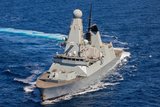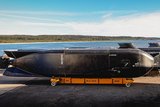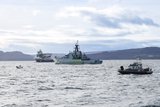Germany and UK build stronger naval ties in North Atlantic
The Stingray torpedo, covered by the new Anglo-German agreement. (Photo: Royal Navy/MoD)
The UK and Germany have agreed to stronger naval ties in the North Atlantic and North Sea, particularly in undersea activity.
The agreement formed part of the wider Trinity House bilateral defence agreement, but is expected to have significant impact on undersea protection in the northern zone.
The aim of the closer collaboration, as laid out in the agreement, was to establish a clearer picture of underwater activity, significantly contributing to the protection of Critical Undersea Infrastructure and Sea Lines of Communications.
To achieve the desired clarity, the two nations agreed to the co-ordination of combined and joint operations in
Already have an account? Log in
Want to keep reading this article?
More from Naval Warfare
-
![Canadian Coast Guard’s OOSV delivery is “major milestone” in fleet modernisation]()
Canadian Coast Guard’s OOSV delivery is “major milestone” in fleet modernisation
The Polar Class 6 platform is the largest CCG science-dedicated vessel and will operate on the country’s east coast.
-
![How the Anduril-HHI autonomous ship plan fits in with the US Navy’s MASC programme]()
How the Anduril-HHI autonomous ship plan fits in with the US Navy’s MASC programme
The new modular vessel is expected to be developed for both commercial and defence use, with a heavy focus on production speed and mission flexibility.
-
![Indo Pacific 2025: Autonomous systems reigned but can the Australian Defence Force afford it?]()
Indo Pacific 2025: Autonomous systems reigned but can the Australian Defence Force afford it?
Multiple autonomous systems and technologies were on display at this year’s Indo Pacific, but questions remain over how the Australian Department of Defence will balance the books.
-
![How the UK Royal Navy is powering up its hybrid fleet to combat new threats]()
How the UK Royal Navy is powering up its hybrid fleet to combat new threats
Since it announced its move towards a new “hybrid navy” earlier this year, the force has announced a number of new uncrewed technologies in the works.























